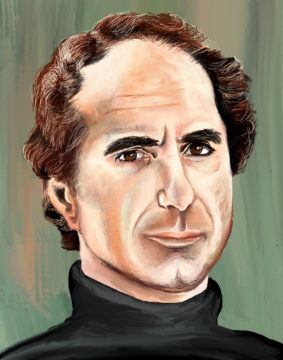Michael Gorra in the New York Review of Books:

Let’s begin with the body, the corpus to which this six-foot-two lefty was bound. Start with his back. In 1955 he pulled a shift of KP on his last day of basic training and met an industrial-size kettle of potatoes. Hefting it was a two-man job, but the other soldier dropped his end and left him to support its weight alone. Something popped, and the next morning he could barely walk. Try a heating pad, they told him, and an army doctor accused him of malingering. It was never really treated, and the pain never went entirely away. He used a steel back brace for a while, and in the 1970s he sometimes needed a foam neck collar; from middle age on he had to work at a standing desk, spelling himself with long periods of lying on the floor. Only in 2002 did he accept the need for surgery, but by then one disk after another had so fully degenerated that there wasn’t much left to save.
More here.
